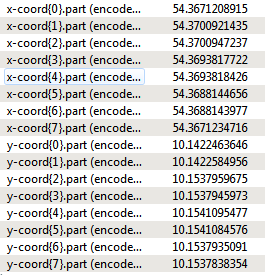This seems as though it ought to be really simple but I can't figure out how to do it.
I have a number of text files which each define a polygon by listing the coordinates of its vertices. I'd like to build polygons from the coordinate lists.
Usually I'd use the VertexCreator to build points/polygons but I can't figure out how to get it to iterate through a list of variable length.
Some of the lists are also quite long (20+ coordinates) and it seems there should be an easier way than adding 20+ VertexCreators in series!












